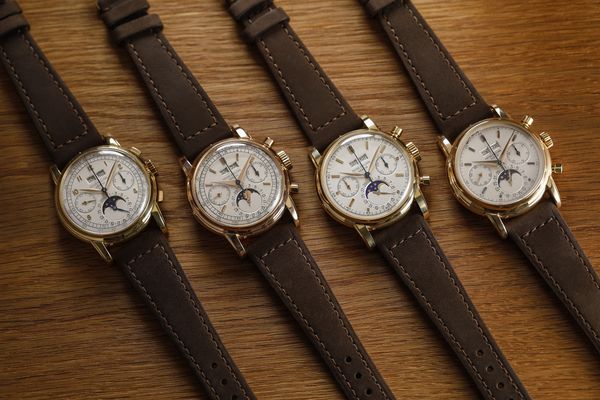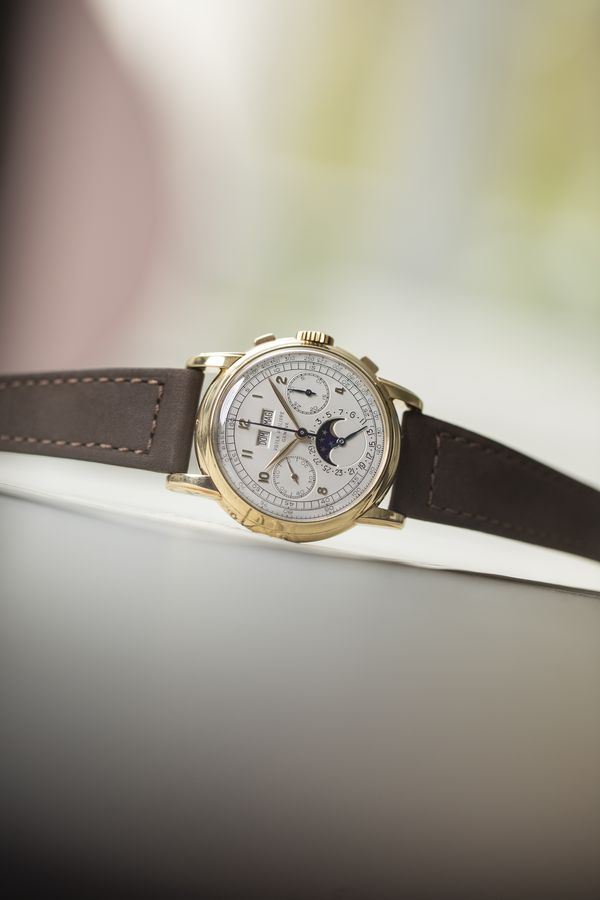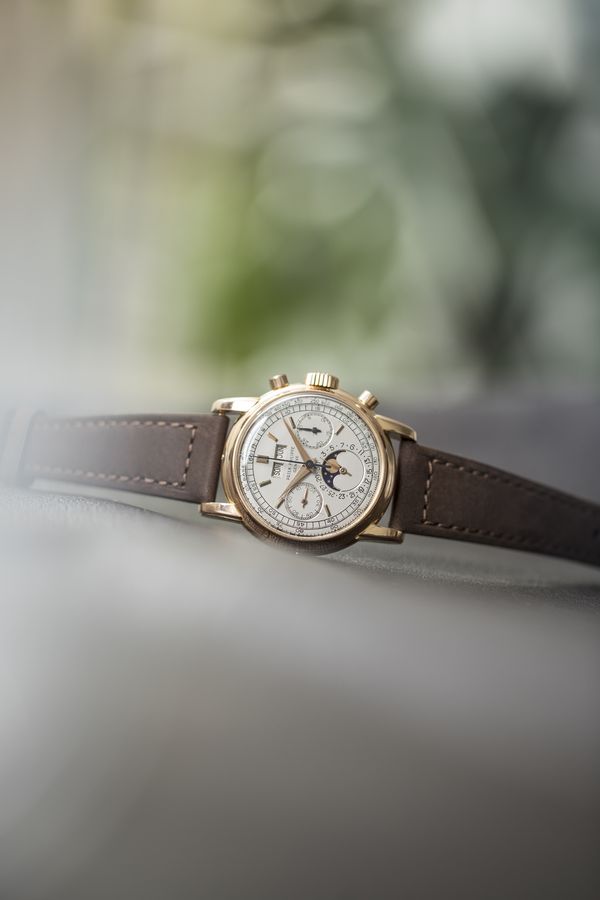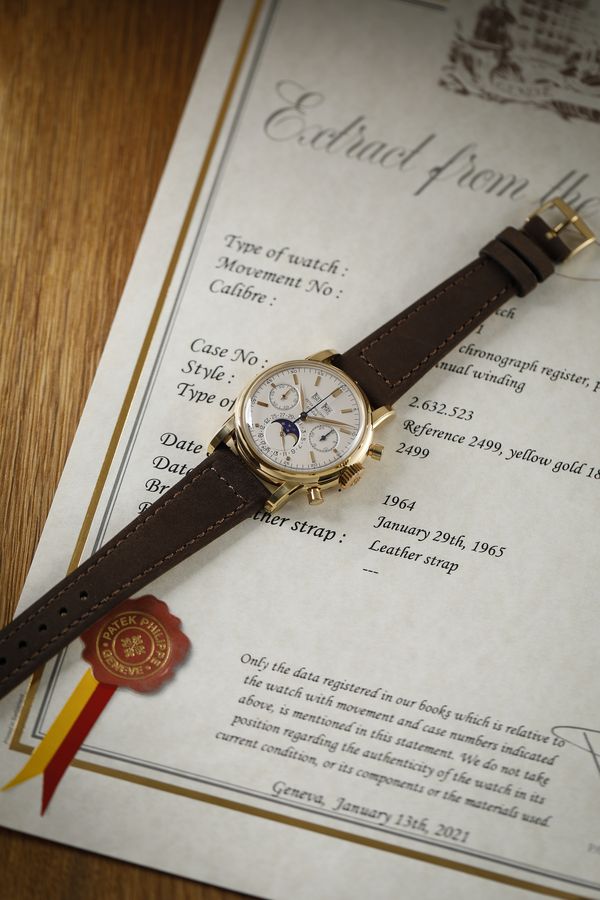- by Arthur Touchot
This article first appeared on Square Mile magazine.
EVEN THE BEST dinner parties now begin with guests checking the strength of their wifi signal or scrambling to find their headphones while faces, familiar or not, pop onto a screen. For better or worse, one of the biggest casualties of this new ritual has been the awkward dance one would perform around the dinner table to find one’s seat and direct interlocutor for the remainder of the evening.
Being quite shy, it’s a moment I used to dread as I am either kindly and strategically placed next to another watch enthusiast and soon relieved of the pressure to make conversation, or someone with absolutely no interest in my admittedly very niche hobby, in which case I’m in more trouble.
I suspect these evenings turned into warnings to never ask me an open-ended watch question such as: how do you explain the sudden popularity of vintage watches? Or why is Patek Philippe regardedby many as the finest watchmaker?
There are no easy answers to these questions – or rather, I wouldn’t know how to respond without launching into an impassioned speech and risking my reputation as a fun dinner guest. A shorter, failsafe way to present the case before making your table companion regret his or her question, would have been to point to one watch in particular – the Patek Philippe Reference 2499 – a watch that sadly I’ve never found myself wearing at a dinner party. Very few people in the world enjoy such a luxury.
The Ref. 2499 is a perpetual calendar chronograph wristwatch – one of the world’s most complicated watches. It’s not the first, nor the last of its kind. Rather, it is considered to be the most beautiful, and as such holds a special place in the hearts of watch collectors, which I have been told the Ferrari 250 SWB fills for car enthusiasts.
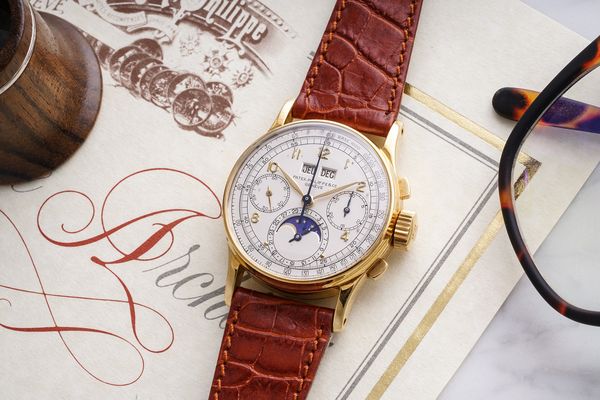
The Ref. 2499’s predecessor, the Patek Philippe Ref. 1518, is arguably the more historically important of the two as it sits at the top the family tree, but the Ref. 2499 is seen as many as a watch that successfully built on the merits of the first by retaining the core design signature of the original and presenting it in a larger and more contemporary case.
But even Patek thought the Ref. 2499 could still be improved and over the course of a 35-year period, the company continued to modernise the model, creating four separate but almost identical models collectors refer to as ‘series’. I warned you watch enthusiasts enjoyed a long story. Well, this is the part in which we look at the four different models, thanks to a superb ‘full set’ collection, assembled by one very focused and patient collector who spent almost 20 years assembling these pieces together – and is now offering them at auction through PHILLIPS this Spring 2021.
A brief history
But first, let’s quickly look at the watch that comes before the Ref. 2499. Introduced in 1941, the ground-breaking Patek Philippe Reference 1518 was the first wristwatch powered by a serially produced perpetual calendar chronograph movement – an incredible achievement given the diminutive size of the watch’s case.
Only pocket watches and a handful of wristwatches made upon special request were able to display this amount of information at once. Never before had a watchmaker found a way to miniaturise such an intricate movement at scale, and none were trying to deliver the answer during the middle of a world war.
Patek would only make 281 models during a 14-year production run (give or take), most of them in yellow gold, with a small percentage of the movements going into pink gold cases, and only a handful going into stainless steel ones.
Because Patek Philippe, and other high-end watch manufacturers preferred working with precious metal at the time, these extremely rare pieces are now the most coveted, and the reason why a stainless steel Ref. 1518 currently holds the record for the highest price achieved by a vintage Patek Philippe – the watch sold by Phillips for a cool £8.9m in 2016, and many speculate it would achieve a whole lot more today.
Even before the Ref. 1518 was fully replaced, Patek Philippe introduced a successful sequel in the Ref. 2499. Starting around 1951, Patek Philippe would produce 349 examples during a 35-year production run. While the new wristwatch retained many of the design codes established by the Ref. 1518, it also introduced a new, contemporary case design, inspired by the industrial aesthetic of the 1950s.
The larger case and down-turned stepped lugs presented a stylistic change and made the new reference one of the most exciting watches to leave the Patek Philippe ateliers, officially launching one of the greatest family trees in the Swiss watchmaking industry. The production of perpetual calendar chronograph wristwatches has been uninterrupted and led to even more complicated wristwatches today.
Lot 161: A Patek Philippe 1st series Reference 2499 in yellow gold
Let’s begin with the first series Ref. 2499, perhaps the most recognisable of the four models because it is the only one that features square chronograph buttons and applied Arabic numerals – two design features present in the watch’s predecessor, they’re a clear visual link between the Ref. 1518 and the Ref. 2499.
For this reason – along with its incredible rarity – the 1st series is arguably the most sought-after of the four. Patek Philippe only made this version of the watch for about half a decade, starting in 1951, and while exact production numbers remain unconfirmed, it’s a watch that only very rarely shows up in auction catalogues.
The present example is only the third that PHILLIPS has had the honour of selling, and our clients have had to wait more than five years since they were last given such an opportunity. If the first series Ref. 2499 holds a natural resemblance to the Ref. 1518 before it, then things begin to change more overtly with the introduction of the second series.
Lot 208: A Patek Philippe 2nd series Reference 2499 in pink gold
The 2nd series is the first Ref. 2499 to feature round chronograph pushers, for example, as well as a slightly improved case designed to better protect the watch’s delicate movement from dust and humidity.
Another distinctive feature of the 2nd series is the dial, which began featuring either Arabic numerals or baton numerals, but this was only the beginning of more significant changes. After only a short production run similar to the 1st series, production on the 2nd series ceased around the early 1960s.
Lot 100: A Patek Philippe 3rd series Reference 2499 in yellow gold
The tachymeter scale is one of the core features of the Ref. 1518 and Ref. 2499, but disappeared with the arrival of the 3rd series Ref. 2499. This instead introduces a more open dial design with outer seconds divisions. The 3rd series also waves goodbye to Arabic numeral dials, which were forever replaced in this model by baton numerals.
Early examples of the 3rd series stand out as having full hard enamel dials, a feature that began fading out in the late 1960s. Throughout its rather longer production run, which spanned almost 20 years encompassing the 1960s and 1970s, the 3rd series otherwise stays unchanged.
Known on paper as the Ref. 2499/100, the 4th and final series of the Ref. 2499 looks almost exactly like the 3rd as it also features round chronograph pushers, applied baton numerals, and outer seconds divisions, but for the very first time in the series, the dial is covered by flat sapphire crystal.
Lot 130: A Patek Philippe 4th series Reference 2499 in yellow gold
This latest feature – which brings the watch into the modern world of watchmaking – makes this version of the watch (alongside the 1st series) the easiest to distinguish, from personal experience.
After serving Patek Philippe so well, the Ref. 2499 was finally retired in the mid-1980s to make way for an equally elegant perpetual calendar chronograph, the Ref. 3970. The silhouette of the Ref. 3970 remains familiar, with round pump pushers and down turned stepped lugs.
However, certain details on the dial hint at a revolution underneath. Indeed, Patek Philippe began using a new movement supplier, placing its faith in a heavily modified Lemania 2310 ébauche officially named calibre CH 27-70Q. On the dial side, this added two new indications, a leap year and a discreet 24-hour hand.
While the brand’s third perpetual calendar chronograph reference proudly announced a new heir to Patek Philippe’s most iconic wristwatch family, the Ref. 3970 has not yet attained the status of its predecessors. In many ways, it benefits from being too similar to the Ref. 2499 without offering the vintage flair of the early 1st, 2nd and 3rd series – or the rarity of any of the four models produced.
We’ve seen exceptional results, on par with the more common and recent 3rd and 4th series Ref. 2499, but only for very special pieces made upon commission by VIP clients.
Those exceptions are reserved for watches that are in fact aesthetically very different from the standard Ref. 3970 models, and therefore, also different from the Ref. 2499 – either because they are made in platinum, or feature black dials and other characteristics that make the watch pretty unique.
Perhaps the most surprising thing about the Ref. 2499 is that after Patek Philippe made the 1st, it still thought ‘we can still improve on that’ – and proceeded to keep up that mentality for more than three decades before eventually ending with a model so faithful to the original that it might look like it failed its mission.
But it didn’t. Instead, it created models that remained equal to their contemporaries, and presented the same watch but with the latest technology. And so the 4th series presents a more dust-proof case, a more scratch-resistant sapphire crystal, but an unmistakably classic and timeless design that continues to make collectors from all over the world dream of the Ref. 2499 – and any version of it.
